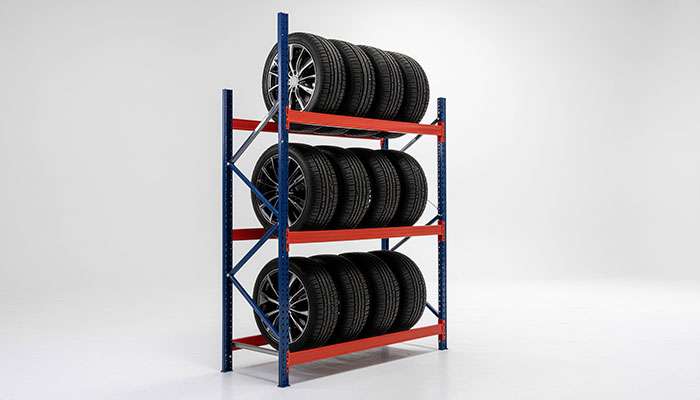
When should you put winter tires on? Most drivers make the mistake of waiting for the first snowfall. The correct answer is simple: make the switch when temperatures consistently drop to 45°F (7°C) or below. This temperature matters because regular tires begin to harden at this point, losing their grip on the road.
Winter tires use special rubber compounds that stay flexible in cold conditions. All-season and summer tires become stiff when temperatures fall, but winter tires maintain their traction exactly when you need it most. You shouldn't use winter tires year-round, though. Driving in hot weather (80°F+) damages them and causes rapid wear.
We'll guide you through everything you need to know about winter tire timing. From temperature guidelines to proper storage, this guide covers the essential information for safe winter driving. You'll learn whether winter tires are worth the investment and how to avoid putting them on too early.
Winter tire decisions confuse many drivers. Here are the most important questions we encounter, along with expert guidance to help you make the right choices for your vehicle.
Temperature drives winter tire timing, not snowfall. The science is straightforward: regular tire compounds harden and lose grip once temperatures consistently fall below 45°F (7°C) for at least a week. This threshold represents the point where all-season tires begin to fail.
Most regions across the United States require winter tire installation between November and April. Pay close attention to your morning commute temperatures. These often represent the coldest driving conditions you'll face. When morning temperatures drop below freezing, it's time to make the switch.
Using winter tires year-round creates more problems than it solves. The soft rubber compounds that excel in cold weather wear down rapidly on warm, dry pavement. Winter tires feel soft and squishy during hot weather, reducing your control during emergency maneuvers.
The specialized tread patterns designed for snow and ice hurt fuel efficiency in summer due to increased rolling resistance. You'll spend more money replacing winter tires sooner rather than maintaining separate seasonal sets.
Winter tires deliver 25-50% more traction than all-season tires in regions with consistent temperatures below 45°F or regular snowfall. This difference can mean stopping safely instead of sliding into an accident.
AAA Foundation research shows that 46% of weather-related crashes happen during winter months. Winter tires provide superior performance not just in snow, but also on cold, dry roads where their specialized rubber compounds maintain flexibility.
Always install winter tires as a complete set of four. Mixing winter and all-season tires creates dangerous traction imbalances that cause spinning (oversteer) or poor steering response (understeer).
Recognizing the right moment to install winter tires goes beyond checking the calendar. Watch for specific indicators that signal optimal timing for the switch.
The 45°F (7°C) mark represents the critical point where tire performance changes dramatically. Regular tire rubber hardens below this temperature, losing the flexibility needed for proper road contact. Winter tires use special rubber compounds with higher silica content that stay flexible when other tires turn rigid.
Pay close attention to morning temperatures during your daily commute. These early hours often show the coldest readings you'll experience while driving. When you see consistently cold mornings for 7-10 days straight, it's time to make the change. Ground temperatures run several degrees colder than air temperature readings, directly affecting how your tires grip the pavement.
Look for telltale signs that winter conditions are approaching. Frost appearing on your windshield and grass indicates temperatures have reached levels where winter tires outperform standard options. Check long-range weather forecasts for predictions of first snowfall or freezing rain events.
Your regular driving routes matter too. Drivers who frequently use shaded roads, bridge crossings, or rural areas that freeze first should consider earlier installation. Mountain passes and north-facing slopes typically need winter tires before city streets at the same elevation.
Installing winter tires when temperatures regularly stay above 50°F accelerates wear on their softer rubber. The deep tread patterns designed for snow traction wear down faster on warm, dry roads.
However, slightly early installation beats waiting too long. A few weeks of extra wear costs less than the safety risks of getting caught unprepared by an unexpected early storm. Most drivers find the sweet spot for installation falls between mid-October and early November, depending on local weather patterns.

Waiting too long to install winter tires creates serious safety and financial consequences. These risks go far beyond simple inconvenience and could convince you to schedule your installation earlier this season.
Once temperatures drop below 45°F (7°C), delaying the switch to winter tires dramatically increases your accident risk. Summer tires lose their traction completely in winter conditions, leading to critical braking and steering failures that cause accidents. The hardened rubber and wrong tread design make sliding on icy or snowy roads almost inevitable, creating poor handling and dangerous driving situations. You're much more likely to lose control during cornering or braking in cold or slick conditions.
Cold weather can permanently damage your summer tires beyond the safety issues. The rubber stiffens and loses elasticity as temperatures drop, often causing cracks. This stiffness also creates a risk of thread block chipping. Cracked or chipped tires are unsafe to drive on and must be replaced immediately. Even when they look fine on the surface, cold temperatures can cause hidden damage that weakens tire structure.
Studded tires provide excellent ice grip but come with strict legal restrictions. Five states completely ban metal studs: Florida, Louisiana, Michigan, Minnesota, and Texas. Most other states allow studded tires only during specific winter months, usually November through April. Ohio law, for example, prohibits studded tires except between November 1st and April 15th. Violating these regulations can result in fines or being turned away at checkpoints.
If you've already waited too long, use these temporary safety measures: double your following distance, reduce speed significantly, and avoid sudden movements. Need quality winter tires quickly? Check out Performance Plus Tire's winter tire selection for reliable options that deliver superior cold-weather traction.

Spring means it's time to switch back to your regular tires. Knowing when and how to make this transition protects your winter tires and keeps your vehicle performing at its best.
Switch back to all-season or summer tires once temperatures consistently stay above 45°F (7°C). This usually happens between late March and mid-April, depending on where you live. Make this change promptly to get the most life from your winter tires. Their softer rubber compounds wear out quickly in warm weather. Keep using winter tires in spring and you'll see braking distances increase by up to 10% on dry pavement and up to 26% on wet surfaces.
Proper storage keeps your winter tires ready for next season:
Clean thoroughly with soap and water to remove road grime and brake dust
Dry completely to prevent moisture damage
Place each tire in its own opaque, airtight bag with air removed
Store in a cool, dry, indoor location away from direct sunlight and heat sources
For mounted tires: stack horizontally or hang on wall racks
For unmounted tires: store standing upright
Winter roads are tough on wheel alignment. Spring tire changes give you the perfect chance to check alignment. Potholes and ice ruts can throw off your vehicle's geometry. Look for uneven wear patterns and check tread depth using the penny test (2/32") or quarter test (4/32") for better winter performance. Quality tires with proper alignment deliver the best safety and efficiency. Browse Performance Plus Tire's winter tire selection to get ready for next season.
Winter tire timing comes down to temperature, not weather conditions. Understanding the critical 45°F threshold helps you make the right decision for your vehicle's safety. Waiting for the first snow puts you at risk, while installing too early wastes tire tread.
The 45°F rule works because winter tires use special rubber compounds that stay flexible when regular tires harden. This flexibility means better traction on cold roads, whether they're dry, wet, or covered with snow and ice. You'll stop shorter and corner better when conditions get challenging.
Removing winter tires at the right time matters just as much as installing them. Once spring temperatures consistently stay above 45°F, switch back to all-season or summer tires. Store your winter tires properly and they'll be ready for next season.
Winter tires represent a smart safety investment, not an unnecessary expense. The cost of a quality set is far less than dealing with accident damage or the danger of losing control on icy roads. Quality tires with proper timing give you confidence throughout the winter season.
At Performance Plus Tire, we carry the best selection of winter tires at the lowest prices. Our expert team can help you find the perfect tires for your vehicle and driving conditions. Browse our winter tire selection to prepare for next season and drive with confidence when temperatures drop.
Master the timing of winter tire installation to maximize safety and tire longevity during cold weather driving.
Switch at 45°F, not first snow: Install winter tires when temperatures consistently drop below 45°F (7°C) for optimal grip and safety.
Temperature trumps weather conditions: Regular tires harden and lose traction below 45°F, even on dry roads without snow or ice.
Avoid year-round use: Winter tires wear 25-50% faster in warm weather and reduce fuel efficiency due to soft rubber compounds.
Remove promptly in spring: Switch back to all-season tires once temperatures consistently exceed 45°F to prevent premature winter tire wear.
Store properly for longevity: Clean, dry, and store winter tires in airtight bags in cool, dark locations to maximize their lifespan.
The key to winter driving safety lies in proactive preparation rather than reactive responses to weather conditions. By following temperature guidelines instead of waiting for storms, you'll ensure optimal traction when you need it most while protecting your investment in quality winter tires.
The ideal time to switch to winter tires is when the average temperature consistently drops below 45°F (7°C) for at least a week. This typically occurs between November and April in many regions, but it's important to pay attention to your local weather patterns.
While installing winter tires slightly early is generally better than waiting too long, putting them on when temperatures regularly exceed 50°F can lead to accelerated wear of their softer rubber compounds. The optimal installation window is usually between mid-October and early November, depending on your local climate.
Postponing the switch to winter tires once temperatures drop below 45°F significantly increases your accident risk. Summer tires lose traction in cold conditions, leading to poor handling and longer braking distances. Additionally, cold weather can cause permanent damage to summer tires, such as cracking or chipping.
To properly store winter tires, clean them thoroughly, dry completely, and place each tire in its own opaque, airtight bag with air removed. Store them in a cool, dry, indoor location away from direct sunlight and heat sources. For mounted tires, stack horizontally or hang on wall racks; for unmounted tires, store standing upright.
When transitioning back to all-season tires in spring, it's important to check your wheel alignment, as winter's rough roads can affect it. Examine tires for uneven wear patterns and check tread depth. This is also an ideal time to ensure your vehicle's overall tire health and safety for the upcoming seasons.